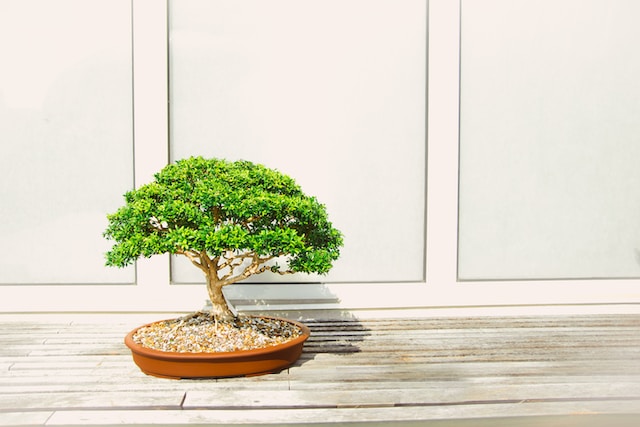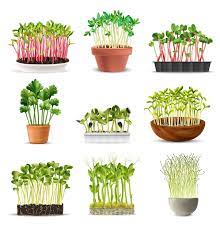Introduction of Bonsai :
Bonsai, the art of cultivating miniature trees, is a time-honored tradition that allows nature’s beauty to flourish indoors. However, raising a thriving bonsai demands a keen understanding of its unique requirements. In this comprehensive guide, we will delve into the essentials of bonsai care, addressing key aspects like watering, fertilizing, repotting, and pest control, enabling your bonsai to thrive and captivate for years to come.
Watering: The Lifeline of Your Bonsai :
Watering is undoubtedly the linchpin of bonsai care. The right frequency and technique can spell the difference between a thriving tree and a struggling one. Let’s explore the keys to watering success
1. Know Your Bonsai Species
Different bonsai species have varying water needs. Some prefer a slight dry-out between waterings, while others thrive on consistently moist soil. To decipher your bonsai’s preference, research its specific species.
2. Water Wisely
Stick your finger about an inch into the soil. If it feels slightly dry, it’s time to water. Avoid letting the soil become bone-dry, as this can place undue stress on the tree.
3. Gentle Watering Technique
The method of watering is crucial. A gentle, slow stream of water ensures even moisture absorption and prevents soil compaction. Continue watering until you notice water draining from the bottom of the pot.
4. Consider a Watering Tray
Placing your bonsai pot on a shallow tray filled with water can enhance humidity and regulate moisture levels, particularly in dry indoor environments.
Fertilizing of Bonsai :
Nourishing Your Miniature Masterpiece takes a lot of patience and practice, bonsai trees need essential nutrients to thrive and maintain their miniature stature. Here’s how to nourish your bonsai masterpiece:
1. Opt for Bonsai-Specific Fertilizer
Bonsai trees have unique nutritional requirements. Use a balanced, slow-release bonsai fertilizer to provide essential nutrients without promoting excessive growth.
2. Stick to a Fertilizing Schedule
During the growing season (typically spring to early autumn), fertilize your bonsai every 2-4 weeks. Scale back or halt fertilization during the dormant winter months.
3. Apply Fertilizer Sparingly
Over-fertilizing can lead to root burns and unchecked growth. Always follow the recommended dosage on the fertilizer packaging to prevent these issues.
Repotting of Bonsai :
Renewing Your Bonsai’s Home
Repotting is a fundamental aspect of maintaining the health and vitality of your bonsai. This process rejuvenates the soil, trims the roots, and prevents root-bound conditions. Here’s how to master the art of repotting:
1. Repot Every 2-3 Years
In most cases, bonsai should be repotted every 2-3 years. However, some slow-growing species may require less frequent repotting.
2. Timing is Everything
Spring, just before the growing season, is the ideal time to repot. This timing allows the tree to recover and adapt to its new environment.
3. Soil Selection Matters
Bonsai-specific soil is a must. It promotes proper drainage and aeration. Choose a soil mix that suits your specific tree species to ensure its health.
4. Trim Roots and Prune
During the repotting process, carefully trim the roots and prune branches to maintain the desired size and shape of your bonsai.
Pest Control of Bonsai :
Safeguarding Your Bonsai
Even the most dedicated bonsai enthusiasts may encounter pest issues. To protect your miniature masterpiece, vigilance and prompt action are key:
1. Regular Inspection
Consistently check the leaves, stems, and soil for signs of pests. Common troublemakers include aphids, scale insects, and spider mites.
2. Natural Remedies
For mild infestations, strong water sprays or gently wiping leaves with a damp cloth can often suffice. For more persistent problems, consider natural remedies like neem oil or insecticidal soap.
3. Isolation Protocols
If one of your bonsai is infested, it’s essential to isolate it from the others promptly. This prevents the infestation from spreading and affecting your entire collection.
Conclusion :
Caring for bonsai is a labor of love, requiring patience, attentiveness, and a profound understanding of your tree’s unique needs. By mastering the essentials of watering, fertilizing, repotting, and pest control, you’ll ensure your miniature masterpiece flourishes for years to come. Embrace the beauty, tranquility, and the connection to nature that bonsai cultivation provides, and you’ll be rewarded with a living work of art that continually captivates and inspires. Bonsai is not just a hobby; it’s a way of life that connects you with the majesty of the natural world in miniature form.




